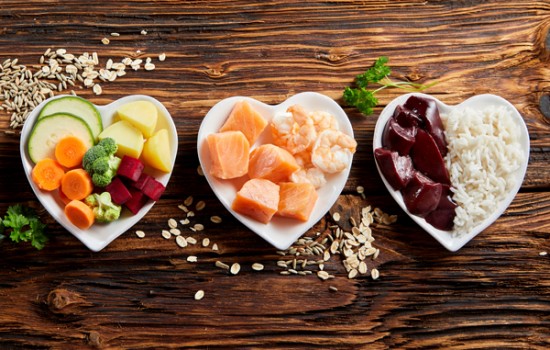|
If you’re looking for a simple way to improve your diet and get a wider range of nutrients, then a great place to start is by aiming to fill your plate with more colourful foods.
In general, eating a more “colourful” diet means that you are getting greater servings of the most colourful foods: fruits and vegetables. Most people have a harder time consuming enough fruits and vegetables than any other food group. This little hack can help you start making important and lasting changes to your diet, ensuring that you get all of the necessary vitamins, minerals, and antioxidants your body needs.

Let’s take a look at some examples and benefits of different colours of food.
Green Foods
Examples: Spinach, Brussels sprouts, cabbage, broccoli, bok choy, avocado, collard greens, kale, zucchini, cucumbers, kiwi, green beans
Green foods tend to be high in phytochemicals known as isothiocyanates, which assist the liver in removing carcinogenic compounds. They are also a great source of potassium, omega-3 fatty acids, and vitamins K, E, and C, all of which are important for a well-functioning immune system. Dark green vegetables are particularly known for being high in dietary fibre as well.
Red Foods
Examples: Cherries, cranberries, tomatoes, radishes, red potatoes, strawberries, red cabbage, red bell peppers, pomegranate, watermelon, grapefruit, guava
Many red fruits and vegetables get their colour from a pigment called lycopene. Lycopene is a powerful antioxidant that may be able to reduce the risk of certain types of cancers. It is also protectant against heart disease. Additionally, red foods have been linked with reduced inflammation and a lower risk of high blood pressure.
Yellow and Orange Foods
Examples: Carrots, sweet potatoes, pumpkin, cantaloupe, oranges, mangos, squash, apricots
Foods that come in yellow and orange hues are usually high in beta-carotene. The body converts beta-carotene into Vitamin A, which is a vital nutrient for healthy eyes, healthy skin, and healthy bones. Yellow and orange foods are also usually high in Vitamin C and can support a healthy immune system.
Blue and Purple Foods
Examples: Blueberries, blackberries, plums, eggplant, figs, purple cabbage, prunes
Blue and purple fruits and vegetables are known for being particularly high in antioxidants. They also get their darker hues from flavonoids called anthocyanins, which are known to have anti-inflammatory properties. Anthocyanins have likewise been linked with a reduction in colon and esophagus diseases, as well as with lower blood pressure.
Brown and Tan Foods
Examples: Whole wheat bread, whole wheat cereal, whole wheat pasta
The rainbow may not contain any shades of brown but, when it comes to food, many of the best sources of dietary fibre are brown or tan in colour. Dietary fibre is important for supporting a healthy digestive tract and has even been linked with a lower risk of developing certain types of cancer.
How to Create a More Colourful Plate
Here are a few tips to help you put together a more colourful plate at every meal time:
- Devote a larger portion of your plate to vegetables
- Use a colourful garnish to brighten up any meal
- Substitute yams in recipes that call for potatoes
- Choose unusual varieties of vegetables if you see them at the grocery store
- Eat fruit or fruit-based desserts
As you can see, aiming to eat a wider variety of colours can be a great way to change your eating and grocery shopping habits. Before you know it, filling your plate with more nutritious food will become an easy and important part of your lifestyle.
|